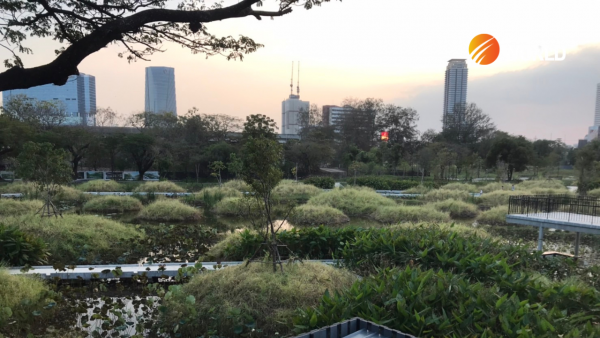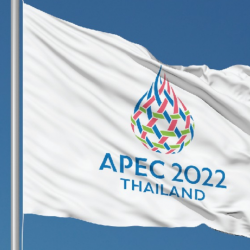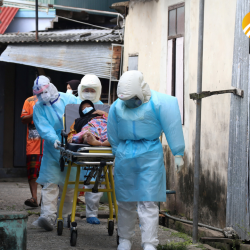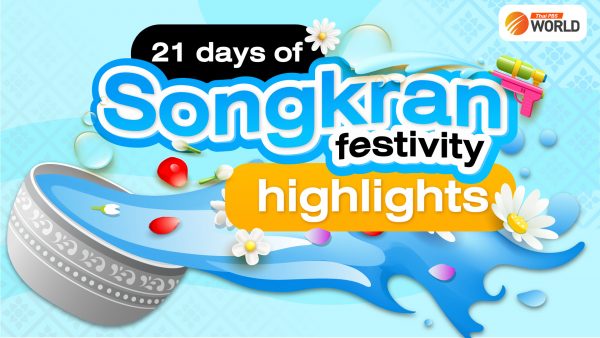Bangkok’s new wetlands give back life to Mother Nature
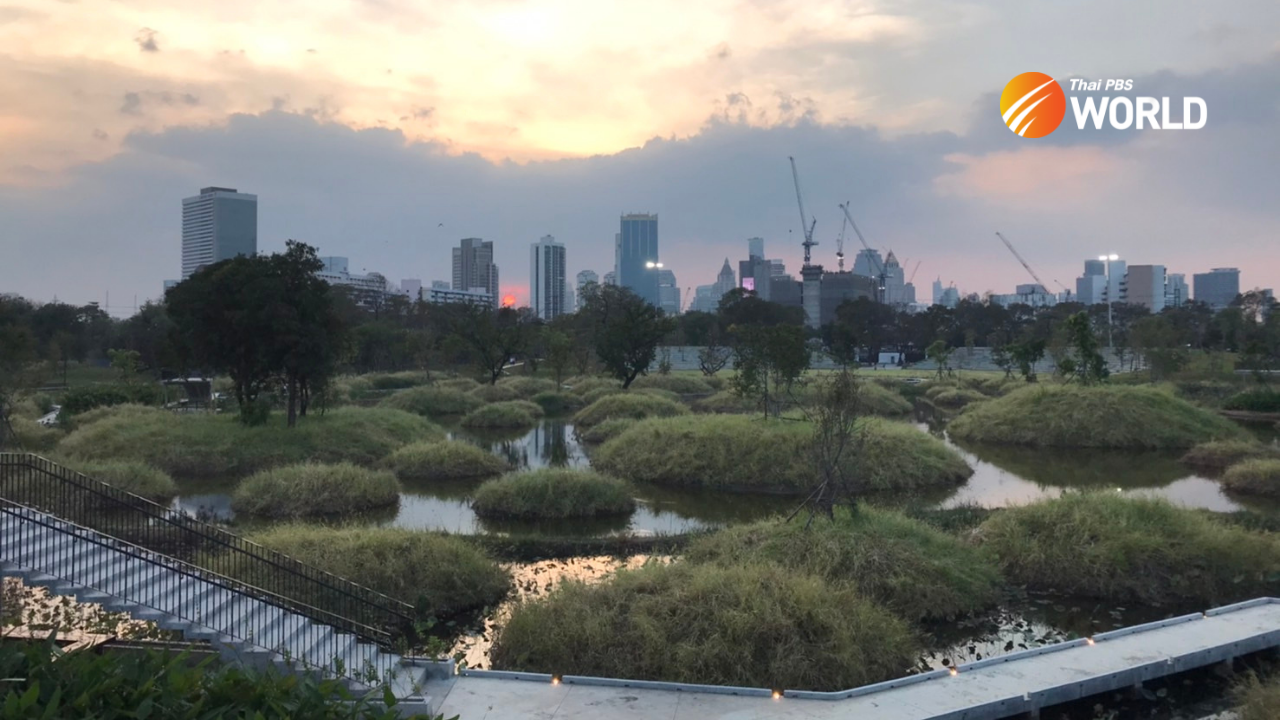
As we made our way up the elevated walkway in Benjakitti Forest Park on a late afternoon in December, our eyes were treated to a different kind of Bangkok sunset – a rare view of a constructed wetland, with ponds and mounds against a backdrop of the skyscrapers that dominate downtown Bangkok.
And there were more surprises to come. The water used in the park and filling the ponds is part of the sewage water – wastewater from local communities – taken from nearby Klong Phai Singto.
“This is a sponge city,” said a member of the Arsom Silp Institute of the Arts who led that evening’s walking tour as the 40 participants reveled in the unique view. In simple terms, it means the upgraded park is absorbing water from the outside and making use of it without depending on rain or an underground supply.
For Bangkok residents, the new wetlands offer clean air while the city benefits from healthier water use. With Benchakitti Park being upgraded into a forest park that combines form and function, Bangkok is finally catching up with metropolitan cities around the world.
A few years ago, we would have never had a chance to see such a view. From a plot of land that was once home to a tobacco manufacturing facility, the 259-rai area has been turned into a forest park, with part of it devoted to a wetland.
The park visit was a part of a two-walk series, Discovering New Park and Old Trees in Bangkok, organized by the Siam Society and Big Trees Project. During the walk, participants were shown around the Lumpini Park that is going to celebrate its 100th anniversary in 2025; Benjakitti Forest Park, which is being upgraded and is expected to be fully open next April; and the Green Bridge that connects both parks. Members of the design team of each park were also there to provide information.
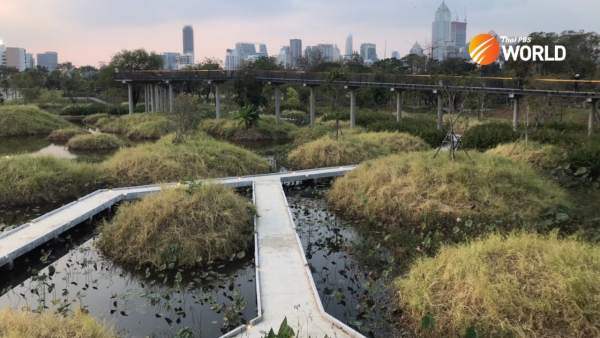
First opened to the public in 1994, Benjakitti Forest Park became another green lung in the city center. In 2016, a plot of 61-rai of the park went under the first phase of renovation. The second and third phases began in October 2020 on a plot of 259 rai formerly occupied by Thailand’s tobacco manufacturing facility.
The new forest park, which has just had its soft launch, isn’t the usual type of green space. Unlike the more familiar lush green Lumpini Park or Wachirabanchathat Park, known locally as Rotfai Park, the new park is a combination of public space for recreational purposes and a wetland that treats the sewage water in a natural way.
The institute’s member who led the walk noted that Bangkok life is supposed to be about living with water, but infrastructure and buildings have taken so much of the urban space that porous surfaces have become smaller and smaller
“If we are creating a park, it has to function and solve some city problems too,” she said.
The new constructed wetland has the capacity to treat 1,600 sq cubic meters of sewage water from the nearby Klong Phai Singto per day, which is enough to fill the four ponds and water the plants inside the park.
Being natural means the park doesn’t look perfectly green all year-round. Some parts will look brown during the dry season and will revive naturally in the rainy season. However, it will need to be closely monitored for the first three years as the plants mature to the point where they can grow on their own.

Pranisa Boonkham, a lecturer in architecture at Thammasat University and one of the judges of the design interview, said that with a limited time and budget, it’s difficult to create a park filled with perennial plants, similar to Lumpini Park. Such a park not only requires a much higher budget but also needs 10 years for the trees to fully grow,
The expert said a wetland is the best solution to increase green public space as it requires uncomplicated and low maintenance. Wetlands also help slow down the water flow and treat wastewater in a natural way.
Note:
Benjakitti Forest Park has had a soft launch and is expected to be fully open next April. The ground-level curvy walkway through the park is now fully opened. Visitors are supposed to access the elevated loop walkway overlooking the park from the Green Bridge, though the loop has yet to be completed. Despite the incomplete structure, it’s more than enough for users to enjoy the walk and the view. The best time to enjoy the vista and take photos is from the elevated walkway before sunset.
Getting there
Take the MRT to QSNCC MRT station and get out at exit 3.
Walk along the Green Bridge from the Sarasin intersection to Benjakitti Forest Park.
